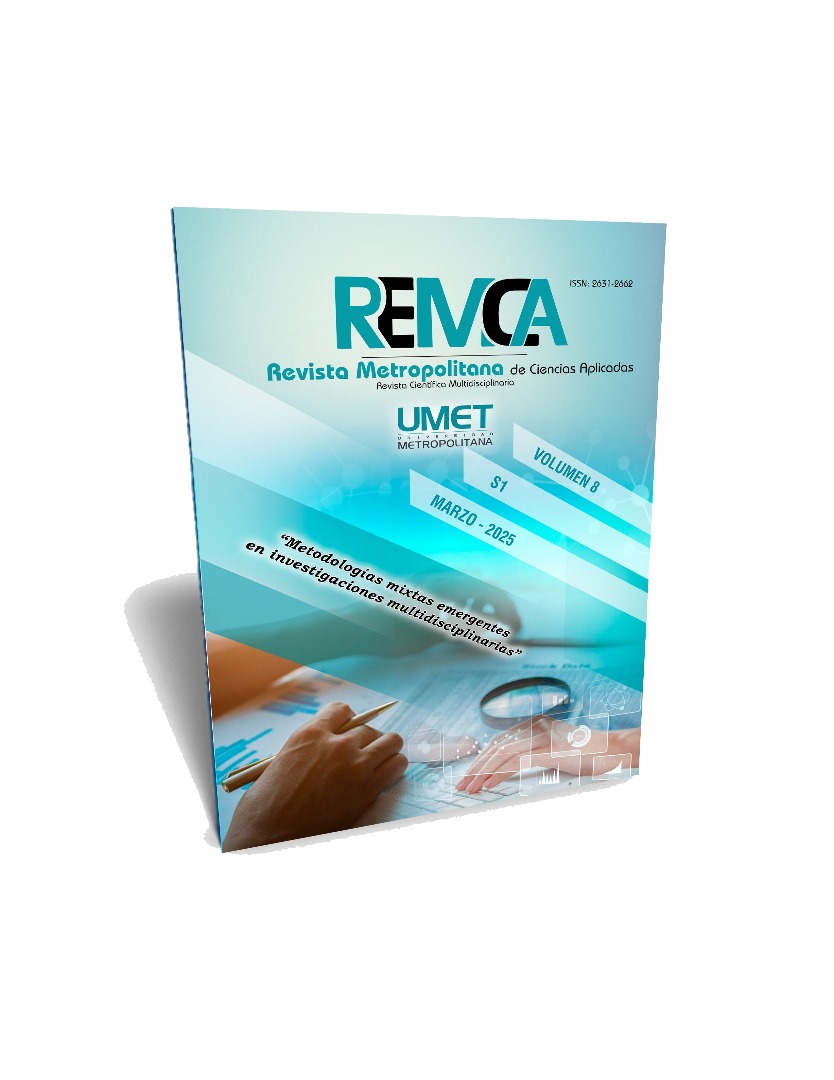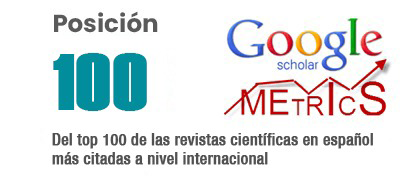Importancia de la inclusión e implementación de la lengua de señas mexicanas en educación básica
DOI:
https://doi.org/10.62452/9pgr7a07Palabras clave:
Inclusión, lengua de señas, sordos, educaciónResumen
El presente trabajo expone una investigación cuyo objetivo es generar conocimiento y concientización sobre la existencia, propósito y beneficio que puede otorgar el aprendizaje, implementación e inclusión de la lengua de señas mexicanas en cada persona que conforma la sociedad en la que vivimos y nos desenvolvemos, así como en el sistema de educación básica. A lo largo de esta investigación se encuentra contenido de alto valor, se centró en la búsqueda y recolección de información de diversas fuentes de investigación claramente relacionadas con la lengua de señas, donde la problemática fue el punto de partida al hacer mención de la población que padece problemas auditivos, esto a fin de resaltar la relevancia del problema; se mencionan los beneficios que otorgaría el aprendizaje de la lengua para cada agente que conforma nuestra sociedad y sistema educativo de educación básica. Todo lo anterior se justificó con información de diferentes y confiables fuentes de información, dicha justificación permitió visualizar la importancia del tema abordado, haciendo ver que hay un problema presente en nuestra sociedad que no es tratado como se debería pese a ser un tema de gran importancia.
Descargas
Referencias
Clemente, S. (2023). Importancia de la lengua de señas y la educación. Subitus. https://www.subitus.com/lengua-de-senas-mexicana-educacion/
Cristancho, A. (2023). La importancia de la diversidad e inclusión en la educación. Fundación Fepropaz. https://fepropaz.com/la-importancia-de-la-diversidad-e-inclusion-en-la-educacion/
Domingo, S. (2023). Lengua de señas: ¿por qué deberías aprenderla? Diario Libre https://www.diariolibre.com/actualidad/contenido-patrocinado/2023/09/22/lengua-de-senas-beneficios-de-aprenderla/2468666
Florán, G. (2014). Manual para padres sobre enseñanza de la Lengua de Señas Mexicana. (Tesis de licenciatura). Universidad Nacional Autónoma de México.
Gómez Esteban, L., & Posada, I. E. (2012). Barreras comunicativas entre personas sordas y oyentes LGBTI del Centro Comunitario Chapinero, Bogotá. Horizontes pedagógicos, 14(1). https://horizontespedagogicos.ibero.edu.co/article/view/111
Gómez, R. M. (2013). La Inclusión de la Persona Sorda a la Educación Superior. Revista latinoamericana de educación inclusiva, 8(1), 93-108. https://dialnet.unirioja.es/descarga/articulo/4755981.pdf
González, R. (2020). Lengua de señas mexicana como herramienta de comunicación para la inclusión social de las personas con discapacidad auditiva. https://www.eumed.net/actas/20/educacion/37-lengua-de-senas-mexicana-como-herramienta-de-comunicacion-para-la-inclusion-social.pdf
Hernández De la Luz, R. (2019). Desarrollo de un intérprete de lengua de señas mexicana con vocabulario configurable según el contexto. (Tesis de maestría). Tecnológico Nacional de México.
Islas, M. L. (2012). La Importancia del Manejo de la Lengua de Señas Mexicana de Parte de las Madres Oyentes, en el Aprendizaje de sus Hijos Sordos. (Tesis de maestría). Escuela de Graduados en Educación.
Martínez, S. (2019). Lengua de Señas como perspectiva en la Educación Básica. Gestiopolis. https://www.gestiopolis.com/lengua-de-senas-como-perspectiva-en-la-educacion-basica/
Marzo, A., Rodríguez, C. X., & Fresquet, M. (2022). La lengua de señas. Su importancia en la educación de sordos. VARONA, (75). https://www.redalyc.org/journal/3606/360673304006/html/
México. Comisión Nacional de los Derechos Humanos. (2024). Día Nacional de la Lengua de Señas Mexicana. https://www.cndh.org.mx/noticia/dia-nacional-de-la-lengua-de-senas-mexicana-10-de-junio-0
México. Consejo Nacional para el Desarrollo y la Inclusión de las Personas con Discapacidad. (2016). Lengua de Señas Mexicana. https://www.gob.mx/conadis/articulos/lengua-de-senas-mexicana-lsm?idiom=es
México. Consejo Nacional Para Prevenir la Discriminación. (2022). Las personas con discapacidad auditiva enfrentan barreras para su participación social. . https://www.facebook.com/watch/?v=678510510606276
México. Instituto Nacional de Estadística y Geografía. (2022). Encuesta nacional sobre acceso y permanencia en la educación. https://www.inegi.org.mx/contenidos/saladeprensa/boletines/2022/ENAPE/ENAPE2021.pdf
México. Secretaría de Educación Pública. (2017) Modelo Educativo. Equidad e inclusión. https://www.gob.mx/cms/uploads/attachment/file/283701/E_Equidad-e-inclusion_0717.pdf
Pérez-Castro, J., & Cruz-Cruz, J. C. (2021). Experiencias de Inclusión-Exclusión de un Grupo de Sordos Usuarios de la Lengua de Señas Mexicana. Revista latinoamericana de educación inclusiva, 15(1), 39-54. https://dx.doi.org/10.4067/S0718-73782021000100039
Prieto, J. (2021). La importancia de la enseñanza de la lengua de señas desde niveles preescolares. Centro recreo. http://centrorecreo.cl/la-importancia-de-la-ensenanza-de-la-lengua-de-senas-desde-niveles-preescolares/
Rodríguez, E. (2021). Lengua de señas: un puente hacia la comunicación inclusiva. Vida Universitaria. https://vidauniversitaria.uanl.mx/expertos/lengua-de-senas-un-puente-hacia-la-comunicacion-inclusiva/
Rodríguez, K. (2024). Día Nacional de la Lengua de Señas Mexicanas y su aporte para personas con y sin discapacidad auditiva. Milenio. https://www.milenio.com/aula/beneficios-de-aprender-lengua-de-senas-mexicanas
Universidad ECCI. (2024). 5 beneficios de aprender lengua de señas. https://www.youtube.com/watch?v=xAls8Q5cMJA
Universidad Internacional de Valencia. (2014). Las ventajas del lenguaje de señas en niños con NEE. https://www.universidadviu.com/es/actualidad/nuestros-expertos/las-ventajas-del-lenguaje-de-senas-en-ninos-con-nee
Verástegui, M. V. (2017) Modelos de inclusión educativa para alumnos sordos señantes. (Tesis de maestría). Universidad Autónoma Metropolitana.
Descargas
Publicado
Número
Sección
Licencia
Derechos de autor 2025 Jorge Manuel Francisco-Cruz, Cecilia Esmeralda Domínguez-Ayala (Autor/a)

Esta obra está bajo una licencia internacional Creative Commons Atribución-NoComercial-CompartirIgual 4.0.
Los autores que publican en la Revista Metropolitana de Ciencias Aplicadas (REMCA), están de acuerdo con los siguientes términos:
1. Derechos de Autor
Los autores conservan los derechos de autor sobre sus trabajos sin restricciones. Los autores otorgan a la revista el derecho de primera publicación. Para ello, ceden a la revista, de forma no exclusiva, los derechos de explotación (reproducción, distribución, comunicación pública y transformación). Los autores pueden establecer otros acuerdos adicionales para la distribución no exclusiva de la versión de la obra publicada en la revista, siempre que exista un reconocimiento de su publicación inicial en esta revista.
© Los autores.
2. Licencia
Los trabajos se publican en la revista bajo la licencia de Atribución-NoComercial-CompartirIgual 4.0 Internacional de Creative Commons (CC BY-NC-SA 4.0). Los términos se pueden consultar en: https://creativecommons.org/licenses/by-nc-sa/4.0/deed.es
Esta licencia permite:
- Compartir: copiar y redistribuir el material en cualquier medio o formato.
- Adaptar: remezclar, transformar y crear a partir del material.
Bajo los siguientes términos:
- Atribución: ha de reconocer la autoría de manera apropiada, proporcionar un enlace a la licencia e indicar si se ha hecho algún cambio. Puede hacerlo de cualquier manera razonable, pero no de forma tal que sugiera que el licenciador le da soporte o patrocina el uso que se hace.
- NoComercial: no puede utilizar el material para finalidades comerciales.
- CompartirIgual: si remezcla, transforma o crea a partir del material, debe difundir su creación con la misma licencia que la obra original.
No hay restricciones adicionales. No puede aplicar términos legales ni medidas tecnológicas que restrinjan legalmente a otros hacer cualquier cosa que la licencia permita.




